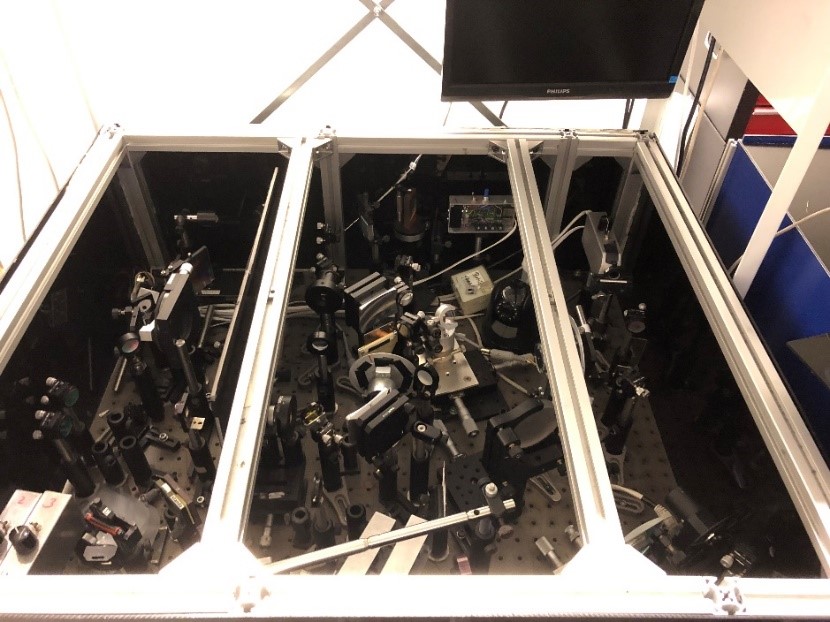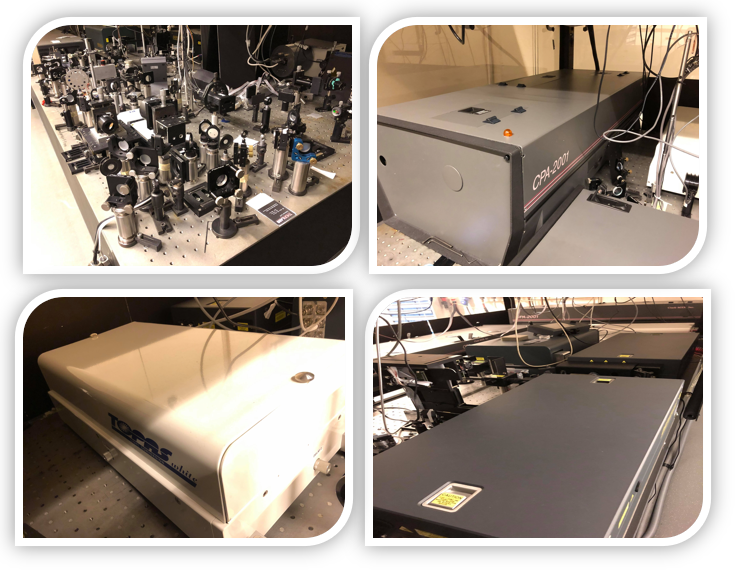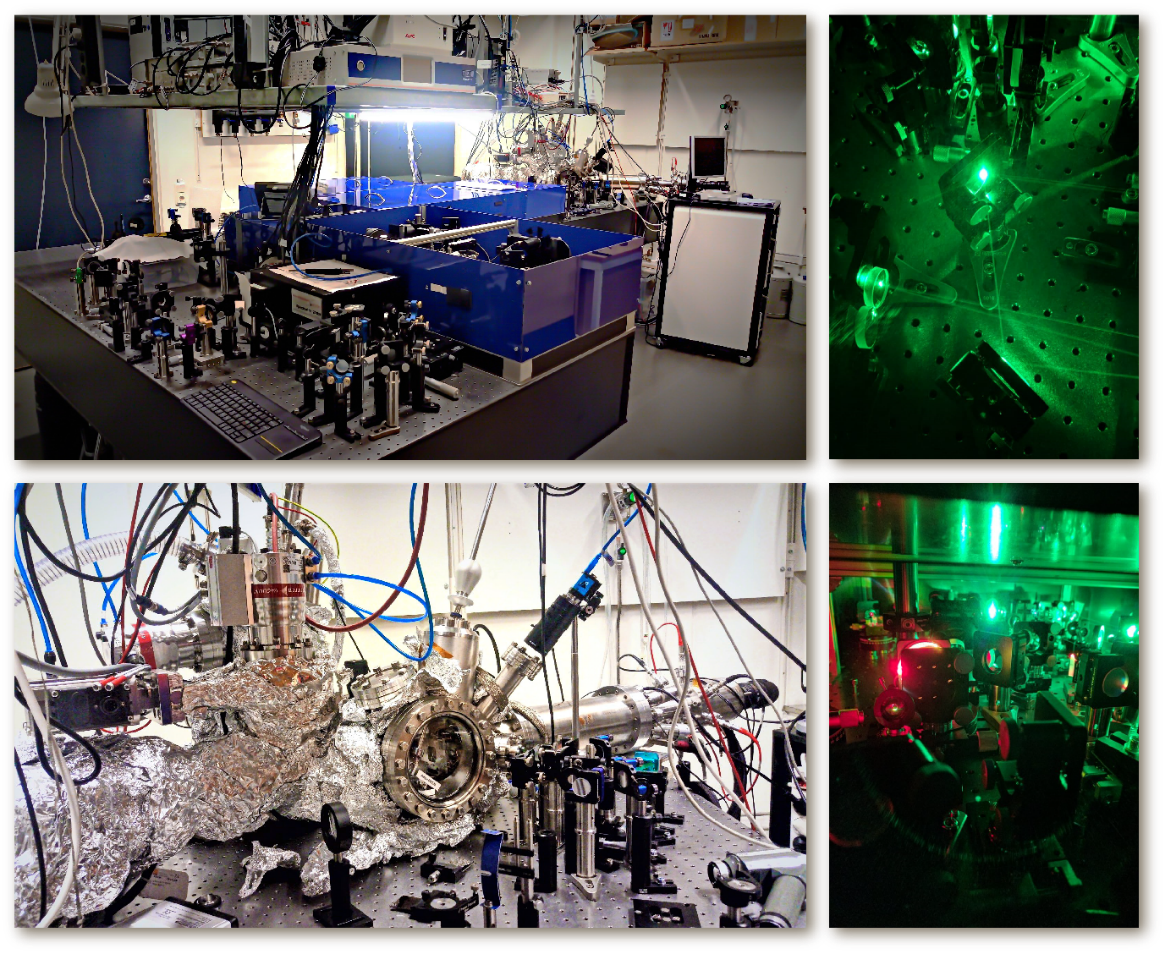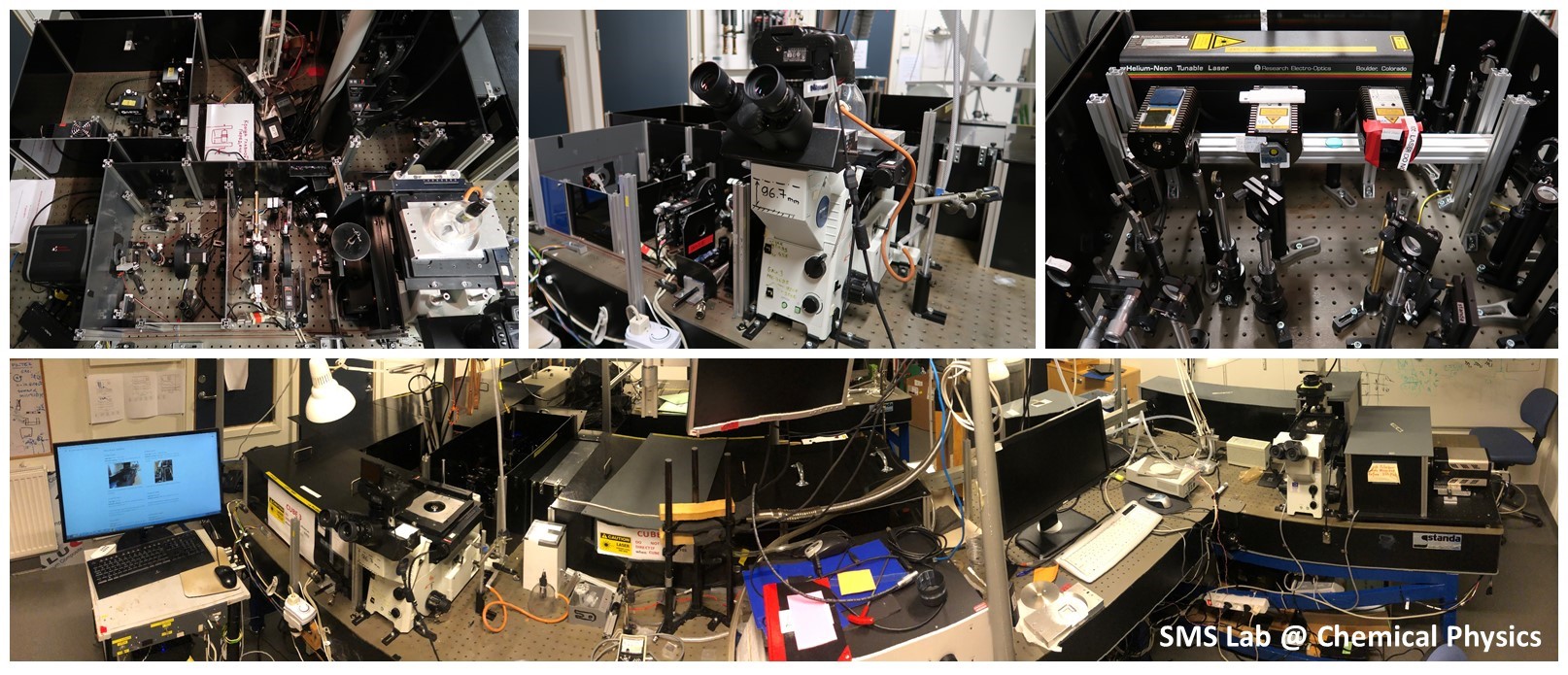
Millennia laboratory has a versatile transient absorption (TA)
setup allowing performing time-resolved experiments in a broad spectral range
(~240 – 1200 nm) with time delays from ~50 fs to 10 ns (optical delay).
Broad-band probe: 1380 nm from OPA (TOPAS, Light Conversion) is used for generating broad supercontinuum in CaF2 plate (370 – 1150 nm), later dispersed in a prism-based spectrograph onto a dual diode array (Pascher Instruments).
Narrow-band probe: OPA output is used directly for probing excited state dynamics of the investigated system (FWHM of ~5 – 20 nm), detected by a photodiode. The single channel detection significantly increases the signal to noise ratio of the acquired data.
Contact person: Pavel Chábera

Contact person: Jens Uhlig

Contact person: Arkady Yartsev

Millennia laboratory has a versatile transient absorption (TA)
setup allowing performing time-resolved experiments in a broad spectral range
(~240 – 1200 nm) with time delays from ~50 fs to 10 ns (optical delay).
Contact person: Arkady Yartsev

Contact person: Donatas Zigmantas

The main experimental setup allows action-detected 2D spectroscopy experiments based on measuring fluorescence and/or photocurrent signals (2DFS and 2DPS). Even other modulation-based measurements combined with imaging can be carried out.
Contact person: Tönu Pullerits

Contact person: Arkady Yartsev

Contact person: Ivan Scheblykin